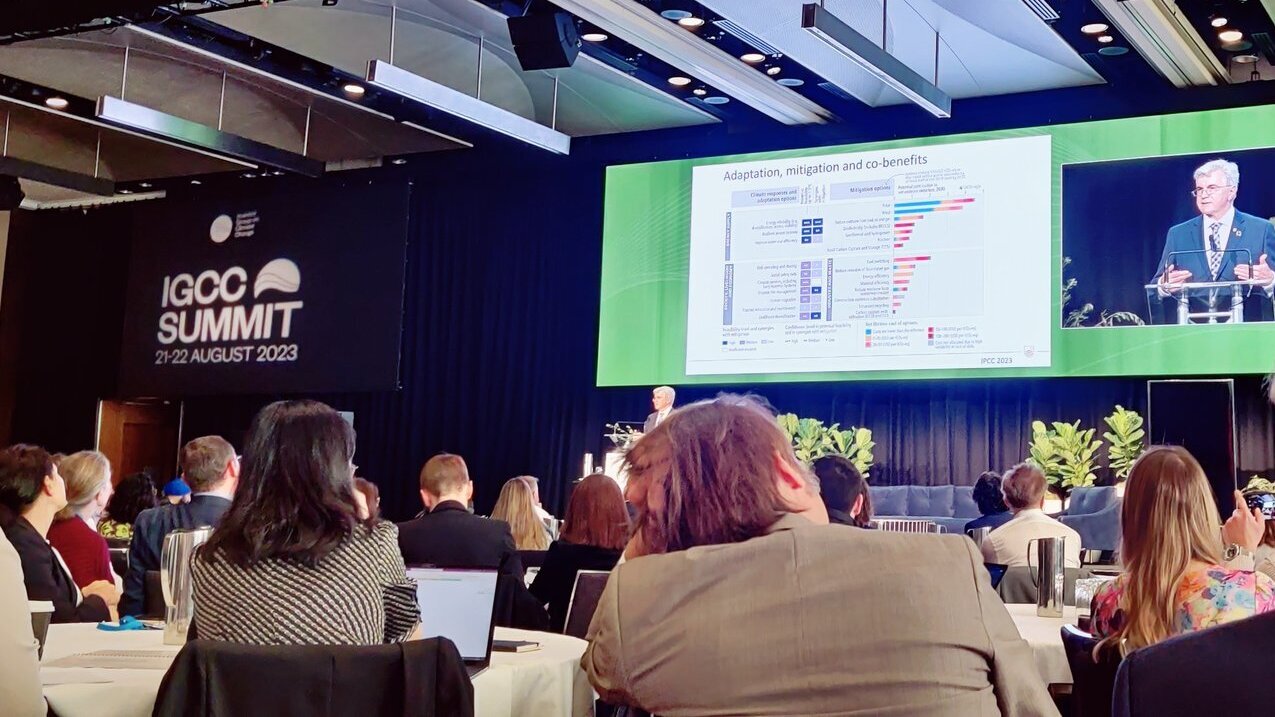
IGCC’s Climate Change and Investment Summit: what to expect this week?
Asset owners kicked off the Investor Group on Climate Change's annual summit in Sydney earlier today. What to expect this week?
Without a doubt, the IGCC is a coalition of significant weight. Its membership consists of the largest institutional investors from Australia and New Zealand. Collectively, they manage over $30 trillion in assets.
And it is not merely superannuation funds, corporate pension schemes and a range of universities that are part of the IGCC: the coalition's ambit stretches to all major heavyweights within the asset management space, including BlackRock, Vanguard and Fidelity International.
Therefore, it is safe to say that the line-up of this week's 2023 Climate Change and Investment Summit - the IGCC’s annual conference - stands testament to the group's significance.
Net Zero Investor looked into the key issues that are expected to dominate the event's agenda today and tomorrow.
Physical risk
In March of this year, the IGCC conducted a survey of Australian investors. The most important conclusion: amongst 25 asset owners and 28 asset managers, physical risk is under-priced.
In fact, less than a quarter of all respondents reportedly assessed physical risk while only 9% said they implemented a response.
This may be somewhat surprising, since Australia’s corporate sector is no stranger to the physical impact of climate change.
The country’s experience with devastating bushfires in 2019-2020 is a sombre reminder of the reality of extreme weather events.
Damages to public infrastructure, physical assets, financial costs of a response and hefty insurance losses exacerbate the consequences of calamity.
"Managing the impact of physical climate risks is becoming an important part of investors’ fiduciary duties to protect their clients’ and beneficiaries’ assets."
In a recent report, the IGCC said: “Managing the impact of physical climate risks is becoming an important part of investors’ fiduciary duties to protect their clients’ and beneficiaries’ assets and the world in which they are valued."
Moreover, a submission by the IGCC to the Australian government warned in June that “the economic, financial, social and environment costs of climate damages are likely to be larger than the costs of achieving net zero."
Therefore, this year's summit plans to pick up where the survey left off.
On day two, this Tuesday, the IGCC is set to launch a much-awaited 'Roadmap to Resilience', a comprehensive physical risk strategy for institutional investors.
Policy
A lot of attention at this year's conference will go to Australia's adjusted approach to climate issues. Following the election of the Anthony Albanese-led Labor Party government, last year, climate policy in Australia has been fast moving.
Just 75 days after the election, the government announced a significant milestone: a 2030 emissions reduction target of 43% from 2005 levels is now enshrined into law.
The climate policy shift in Australia over the past year has left plenty for investors to consider.
In all likelihood, the next 18 months will be no different. It is then of value for investors to understand in granular detail the strategy Canberra will follow.
At the summit, some of the country’s top policymakers will make that possible. Australia's minister for climate change and energy, Chris Bowen, has agreed to open the summit and outline how an ambitious emissions reduction plan is expected to be achieved.
Also read
Investors digest new reporting standards as ISSB principles rapidly gain momentum
In addition, shadow minister Ted O’Brien will shed light on the coalition’s climate plans: providing a rather critical insight into the political equilibrium of climate policy down under.
The prospect of mandatory climate disclosures, the future of ISSB standards and the complex task of addressing greenwashing concerns are amongst the policy questions expected to be addressed.
"The economic, financial, social and environment costs of climate damages are likely to be larger than the costs of achieving net zero."
Engagement and Allocation
Finally, the summit will put the spotlight on what are arguably two of the most pressing climate-related issues for most asset owners: engagement and capital allocations in climate solutions.
The agenda includes a panel to question why “progress is still below expectations”, despite engagement having paved the way for bold corporate ambition.
The focus of the discussion is expected to be on what happens next; the range of possible escalations and actions that will increase the effectiveness of investor engagement.
In addition to engagement, the summit will offer an opportunity to reflect on changes in capital allocations. According to the agenda, $12 trillion needs to be deployed in climate solutions by 2030.
Achieving this target is complex: opportunities need to incentivise crowding-in rather than out of private capital and financial risks across a range of asset classes need to become clearer.
Also read
Hopelessly divided California: home to a host of different net zero approaches




